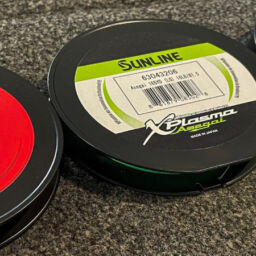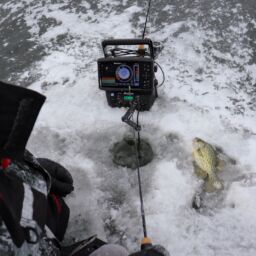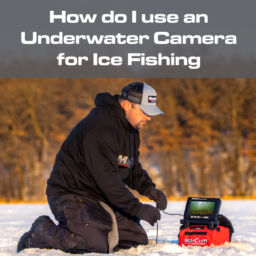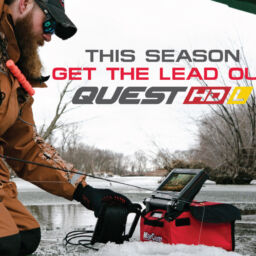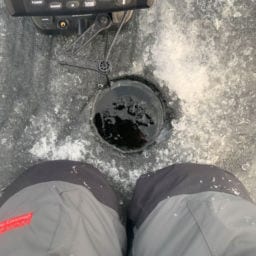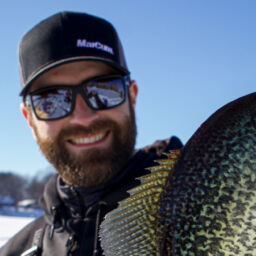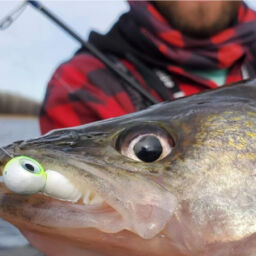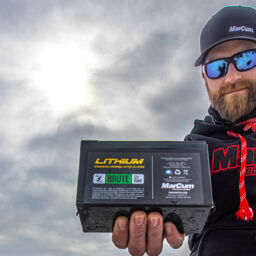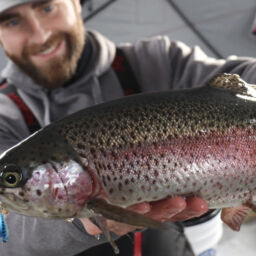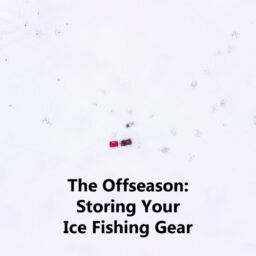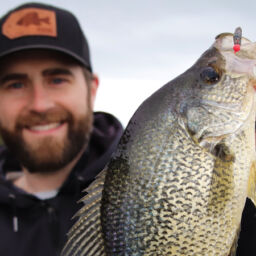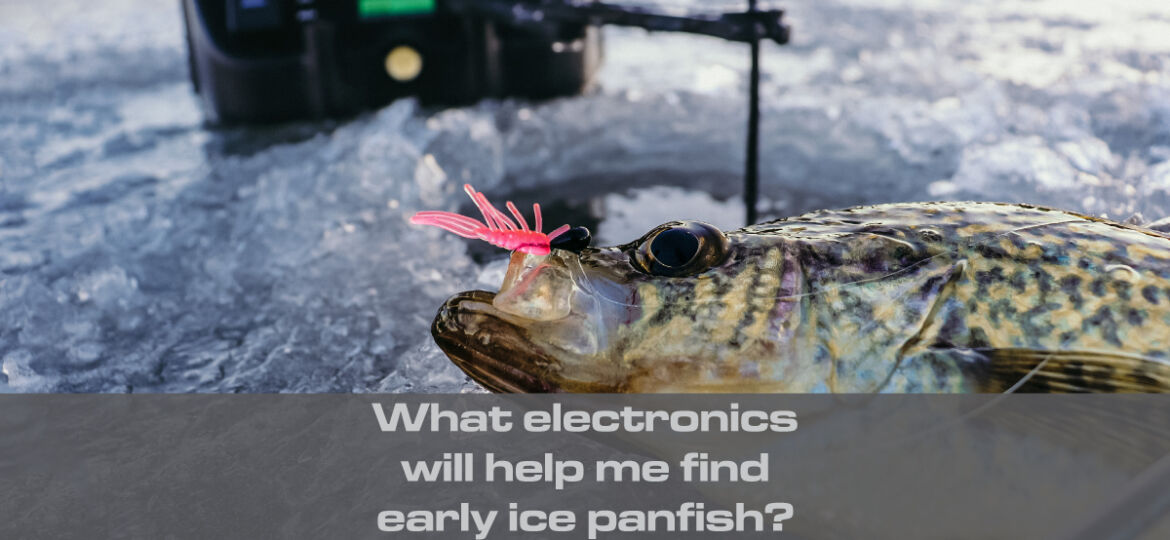
Early Ice Panfish
One of the most common questions heard from new ice anglers relates to electronics – “Which is better – an underwater camera or a flasher/sonar?” The short answer is that it really depends.
The long answer is that there are certain situations that each unit type excels in. Depth, water clarity, habitat, and fishing style greatly impact which unit is right for a specific set of circumstances. In a perfect world, an ice angler should have both. This is particularly apparent for anglers that target panfish during the winter months.

As ice caps lakes across the Ice Belt, panfish populations find themselves across a wide range of habitat types. Vegetation, wood, rocks, flats and expansive basins are all equal opportunity employers when it comes to holding panfish. Employing both flashers and underwater cameras during the winter months will ultimately lead to more success on the ice. At first ice, panfish are often found in a few key locations – basins, weeds, and wood.
The Basin Bite
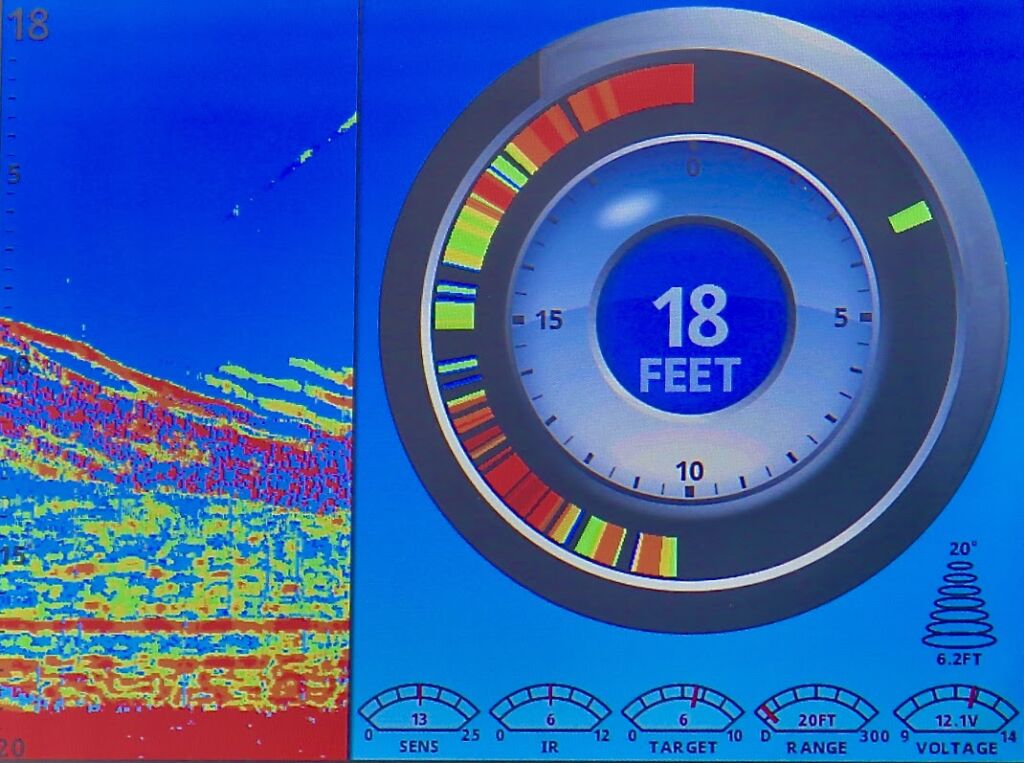
Nearly every angler that has targeted panfish through the ice is no stranger to the basin bite. In this sense, the basin refers to the deep, essentially featureless portions of the lake.
In a lot of lakes, both crappies and bluegills spend a large portion of the winter months roaming the open basins in search of their next meal, but this is especially common with crappie populations. Fish often congregate in large schools and can be found suspended throughout the water column.
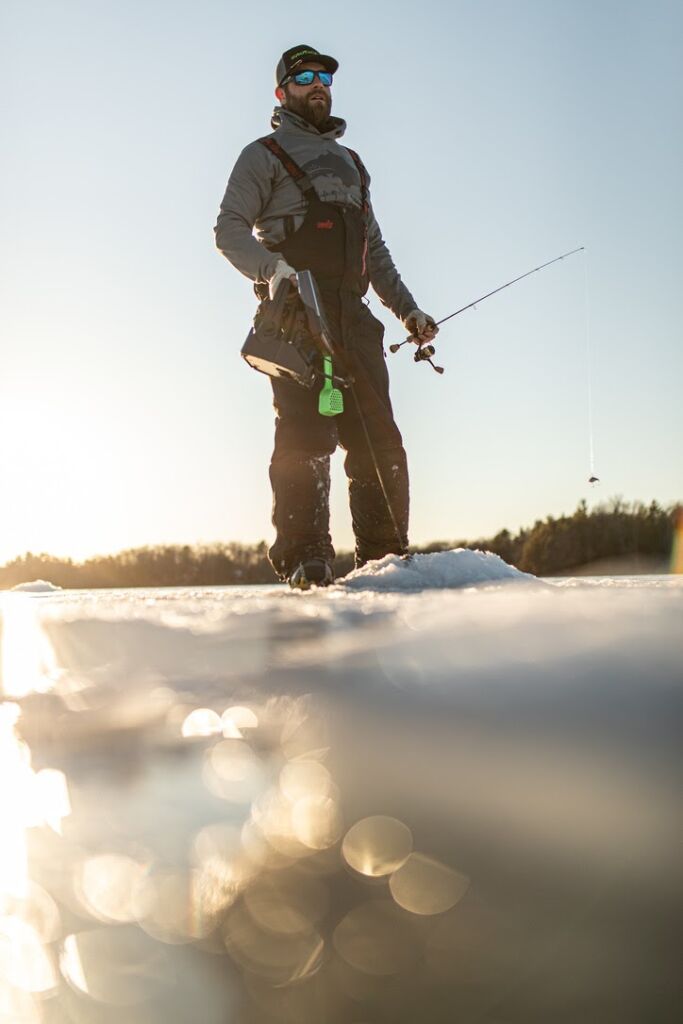
For basin-oriented fish, flasher and sonar systems are markedly advantageous for tracking down these roaming packs. First and foremost, flashers provide a full view of the water column, regardless of depth. This is especially important for searching for fish that can show up anywhere in the water column.
In some lakes, these schools of fish find themselves roaming high in the water column, and in others they reside closer to the bottom. Most of MarCum’s line of flasher and sonar systems come standard with moveable zoom. This feature allows an angler to zoom in on a specific depth range, which is particularly helpful for when fish suspend at a consistent depth.
The portability associated with flasher and sonar systems also make them a great choice for basin oriented panfish. These fish tend to live a relatively fast paced life and are constantly on the move. Having a unit that can be quickly moved from hole to hole and provide real time readings allows an angler to stay on a school.
The Weed and Wood Bite
A commonly overlooked winter panfish bite often exists in the shallower portions of a lake. Drones of anglers walk by and over premium panfish habitat on their way to get to the community holes.
Healthy vegetation and submerged timber are known to provide first class accommodations for early ice fishing panfish, but dissecting these spots can take some time and certainly the right tools. Enter the underwater camera. Few tools are as effective as the underwater camera for searching cover.

Vegetation is home to panfish throughout much of the early ice period. Panfish spend their days stationed in the thick stuff or traveling nearby. For vegetation related bites, it’s critical to understand and identify which weed types will hold fish. Beyond that, it’s vital to determine whether or not the weeds are healthy.
Both factors have a big influence on panfish location. From the surface, weeds basically look like weeds. An underwater camera can help an angler quickly discern which weed types are present, if those weeds are healthy, and ultimately if they are holding fish.
Panfish also relate to cover in a variety of ways. Recognizing how fish position themselves along a weed line or in relation to submerged wood can make all the difference between catching fish or not. This is notably apparent when crappies and bluegills relate to fish cribs.
Crib related fish will often hold extremely tight to the cover – only rarely venturing out of their safe space to pick off a quick meal. Underwater cameras provide anglers with a clear view of how fish are situated and in turn position themselves to be in the right place at the right time.
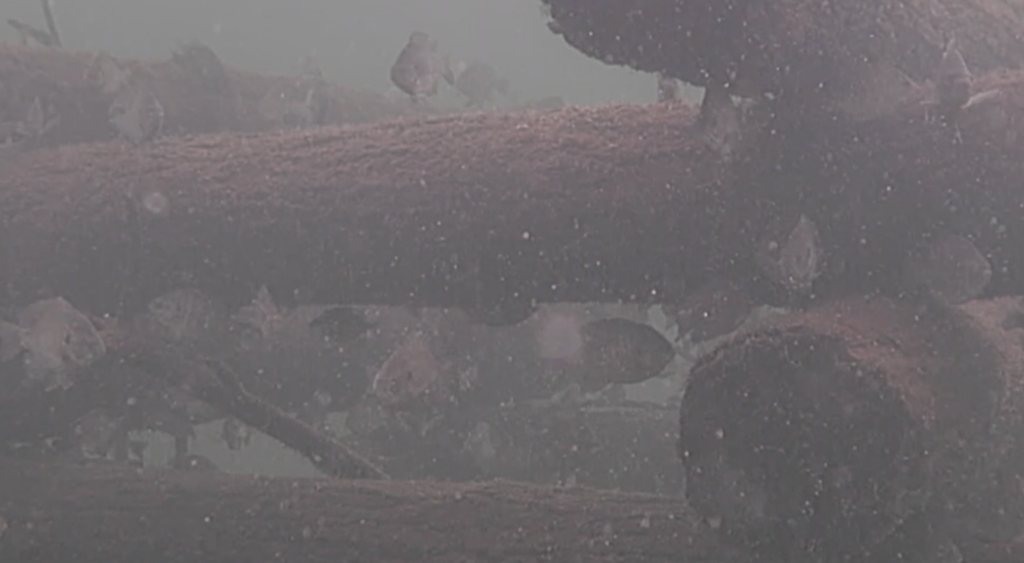
These cover related bites occur in very specific locations, so on the move angling is not always a necessity. As a result, sit and fish angling comes more into play. MarCum’s fleet of underwater viewing systems provide a slew of features that pair well with this more stationary fishing style. Crisp color displays, temperature, relative direction, and depth allow anglers to quickly evaluate different angling scenarios.
Flasher/sonar systems and underwater cameras are incredible pieces of equipment for tracking down winter panfish and improving the overall on-the-ice experience. Each style of electronics is valuable in different ways. These tools have specific situations where they excel and relying on both types can make an individual a more proficient angler.


